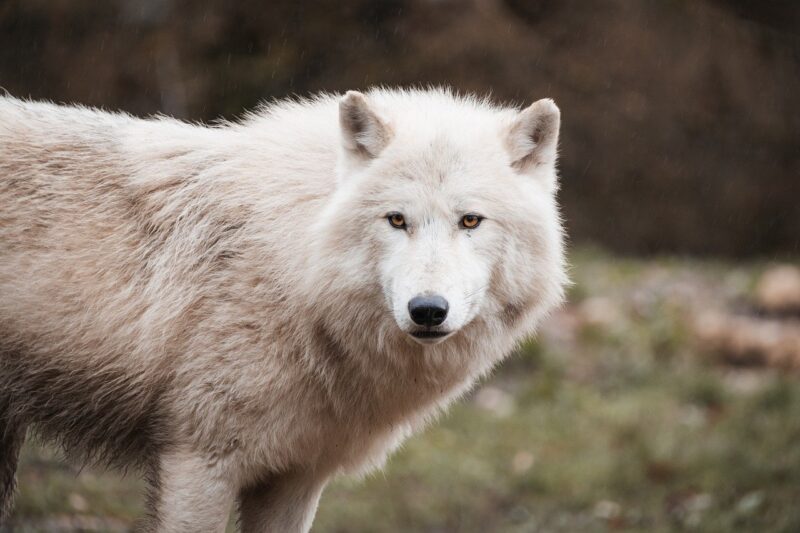Ice Age Predators: How Saber-Toothed Cats and Dire Wolves Hunted in Frozen Landscapes
November 14, 2024

The Ice Age, often referred to as the Pleistocene Epoch, was a time of drastic environmental change that dramatically affected the planet’s fauna. Among the most intriguing predators of this era were the saber-toothed cats and dire wolves. These formidable carnivores adapted to face the harsh realities of a frozen landscape inhabited by colossal megafauna, small mammals, and shifting ecosystems. Insight into their hunting strategies not only reveals how they survived but also offers a glimpse into the interactions that defined an entire epoch.
1. The Ice Age Environment: A Frozen World
During the Ice Age, large parts of the Earth were covered in ice sheets, resulting in a drastically altered ecosystem. Regions that are now temperate climates were then harsh tundras and grasslands, teeming with life yet extreme in its challenges. The food chain was dominated by large herbivores like mammoths, mastodons, and giant bison, which had to adapt to the frigid conditions. In this unforgiving landscape, apex predators needed innovative strategies to hunt effectively.
Saber-Toothed Cats (“Smilodon”): Known for their iconic elongated canines, saber-toothed cats were among the top predators of their time. Their robust bodies and muscular builds made them effective hunters, allowing them to take down prey ranging from bison to young mammoths.
Dire Wolves (“Canis dirus”): In contrast, the dire wolf was slightly smaller than today’s gray wolf but was more robust. These pack hunters relied on cooperation and strategy, allowing them to hunt large prey efficiently. Their sheer numbers and coordinated efforts made them a formidable force in the Ice Age ecosystem.
2. Hunting Strategies of Saber-Toothed Cats
Saber-toothed cats were not typical felines. Unlike modern lions that rely on stamina and strength, saber-toothed cats exhibited unique hunting strategies that capitalized on their powerful physiques and extraordinary dental adaptations.
#
Key Hunting Techniques:
– Ambush Predation: Smilodon preferred striking from hidden vantage points. They used the element of surprise to leap onto their prey.
– Powerful Bites: Their large canines were designed for delivering deep, fatal wounds rather than tearing flesh, which allowed them to effectively bring down large mammals quickly.
– Short Bursts of Speed: Although not built for endurance, saber-toothed cats possessed remarkable short-range sprinting capabilities, allowing them to close in on their prey in a final, powerful leap.
The ability to dispatch prey quickly reduced the chances of losing a meal to competitors or scavengers. In a landscape filled with other predators, efficiency was critical for survival.
3. The Social Structure of Dire Wolves
Dire wolves were highly social animals, a trait that greatly influenced their hunting effectiveness. Living and hunting in packs enabled them to take down larger prey and, as a result, gain access to better food resources.
#
Social Behavior and Hunting Tactics:
– Pack Dynamics: The social structure of dire wolf packs was complex, based around cooperative breeding and collective hunting strategies that increased their ability to secure food.
– Sustained Attacks: Dire wolves could wear down their prey over longer distances by working together, taking shifts in pursuit until a target was exhausted.
– Communication: Vocalizations, body language, and scent marking played significant roles in coordinating their hunting efforts and establishing territory to reduce confrontation with other predators.
This cooperative strategy drastically improved their hunting success rates, allowing them to dominate their ecological niche alongside saber-toothed cats.
4. Competition Between Saber-Toothed Cats and Dire Wolves
While saber-toothed cats and dire wolves often coexisted, they were fundamentally different predators with distinct hunting practices, leading to competition for resources.
#
Resource Competition:
– Overlapping Prey: Both predators hunted similar types of prey, including large herbivores such as bison and young mammoths, heightening competition.
– Territorial Behavior: Rivalries over territory led to challenges. Saber-toothed cats tended to be solitary, while dire wolves relied on their pack strategy to stake claims.
#
Ecological Impact:
The competition between these two predators shaped the landscape of the Ice Age, influencing herbivore populations and the dynamics of the ecosystems they inhabited. Understanding their relationship helps us grasp how environmental challenges engineered complex interactions between species.
5. Extinction: What Happened to These Predators?
The extinction of the saber-toothed cat and the dire wolf raises questions about climate change, human impact, and the dynamics of ecosystem stability during the close of the Ice Age approximately 11,000 years ago.
#
Factors Leading to Extinction:
– Climatic Changes: The end of the last Ice Age resulted in a warming climate, drastically altering habitats and the distribution of prey, resulting in food scarcity.
– Human Encroachment: With the arrival of humans who were also hunting for large game, competition intensified for apex predators. Overhunting and habitat destruction likely contributed to the decline of both species.
In reviewing the report of their extinction, it becomes evident that ecosystems are interconnected, and primary predators are critical to maintaining overall ecological balance.
Conclusion
The saber-toothed cat and the dire wolf, while distinct in hunting style and social behavior, shared the same unforgiving world of the Ice Age. Their adaptations allowed them to thrive in a challenging environment where competition was fierce and survival was paramount. By examining their strategies, we gain insight not only into their lives but also into the ecological tapestry of an era long past, providing a basis for understanding how modern ecosystems function today. Understanding these ancient predators enables us to appreciate the delicate balance in our current environment.
Ultimately, the legacy of the saber-toothed cats and dire wolves serves as a testament to nature’s resilience and the evolutionary strategies developed by these apex predators of the Ice Age—a period defined by ice, vast landscapes, and fierce survival.






